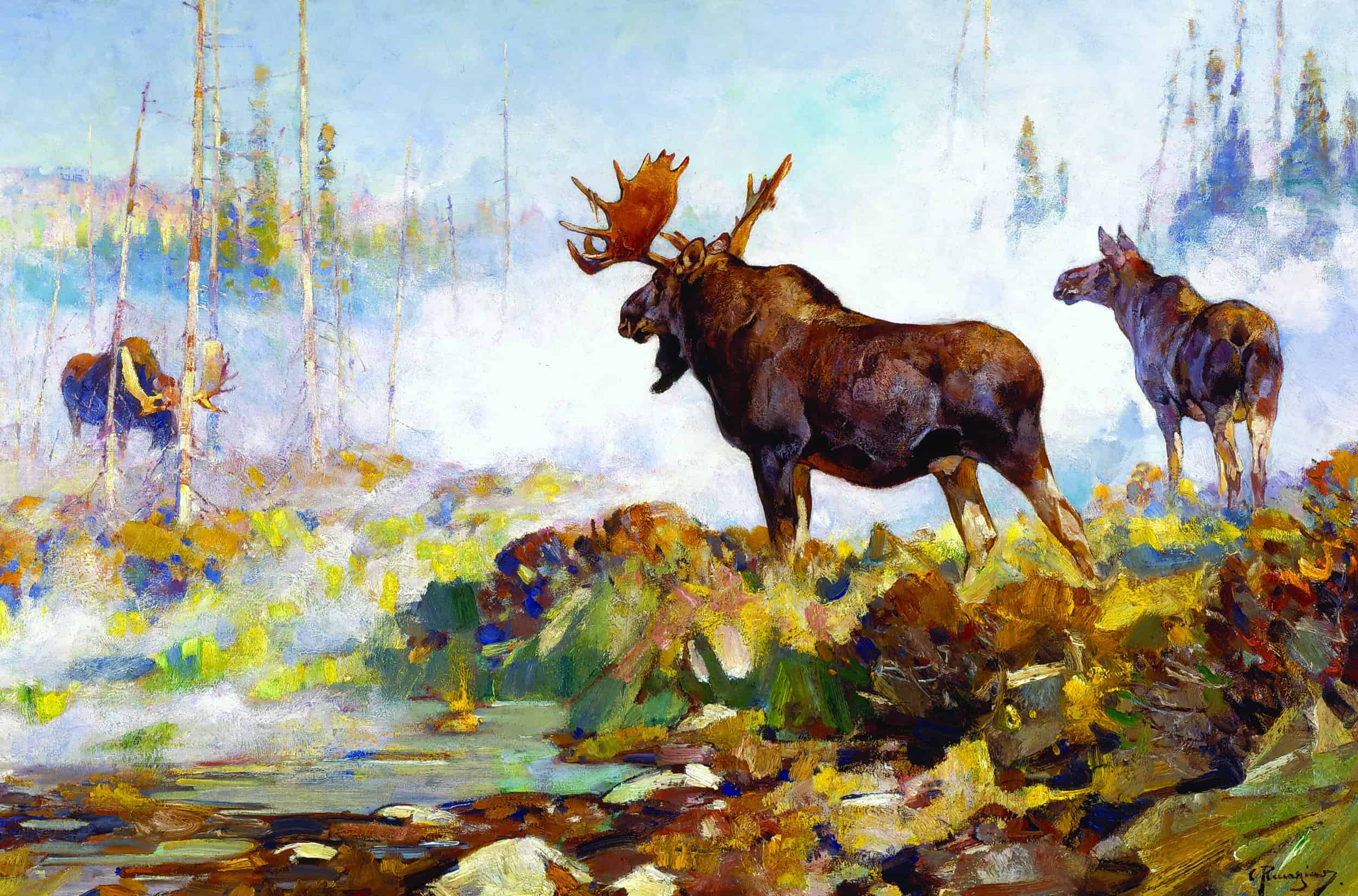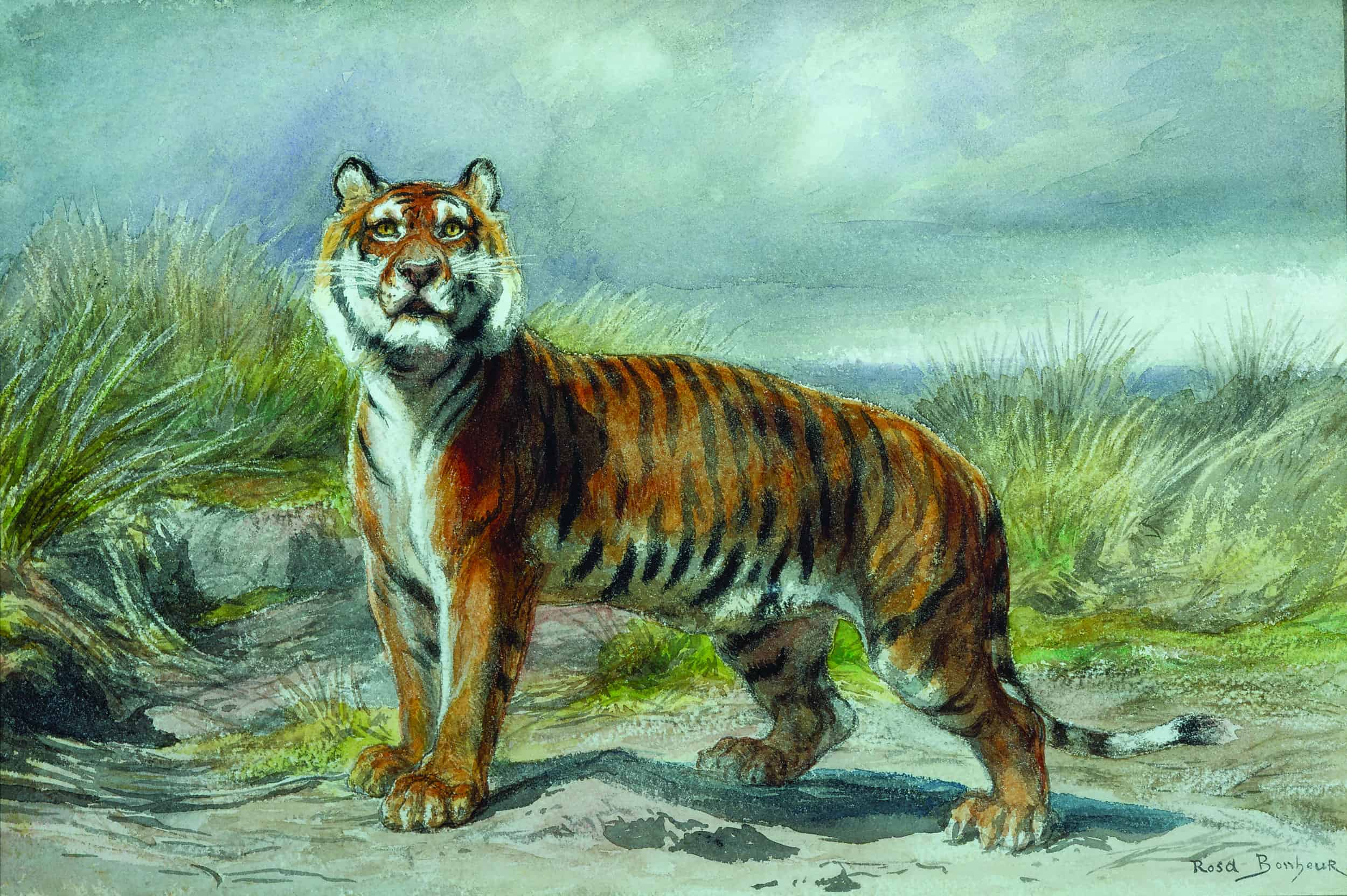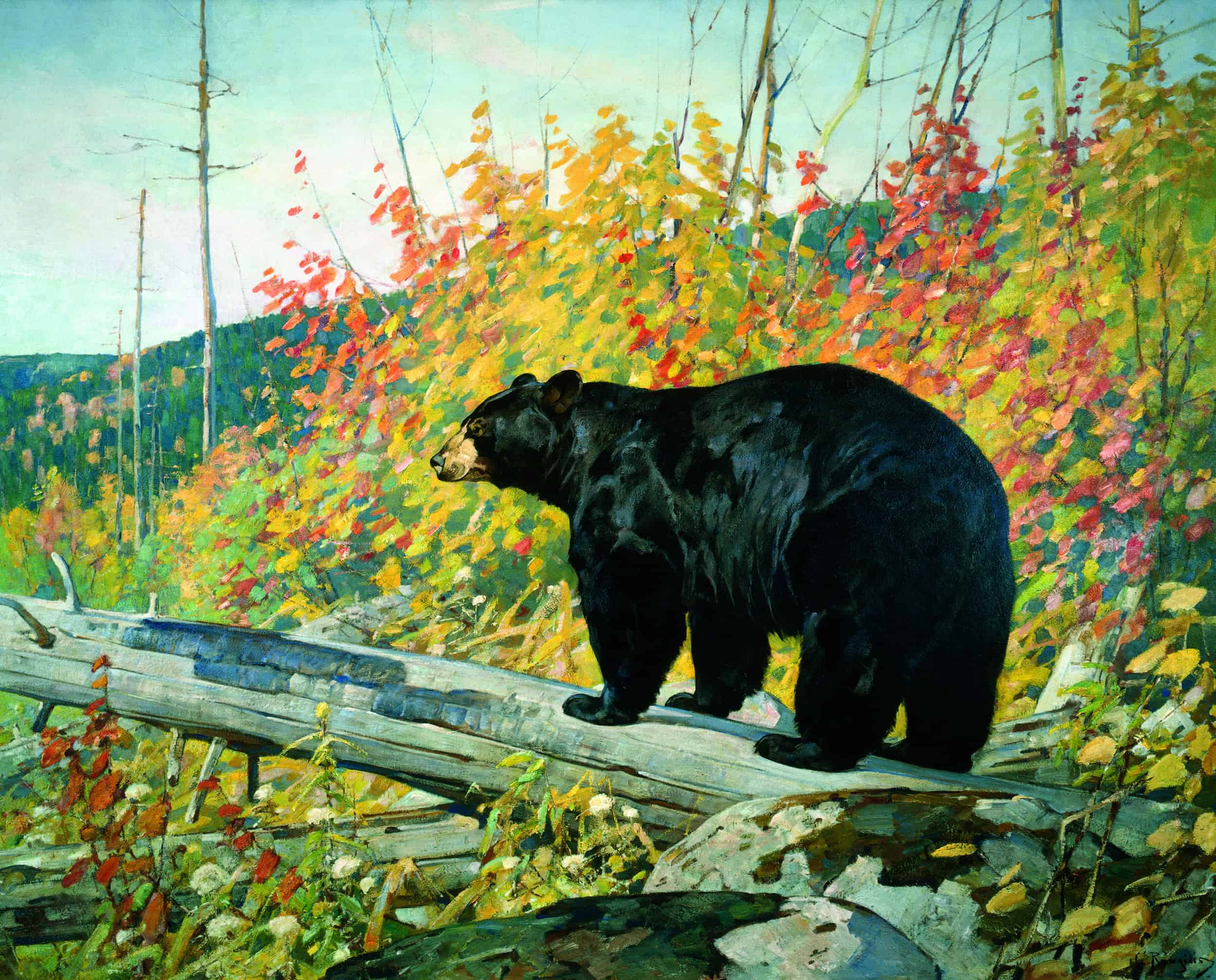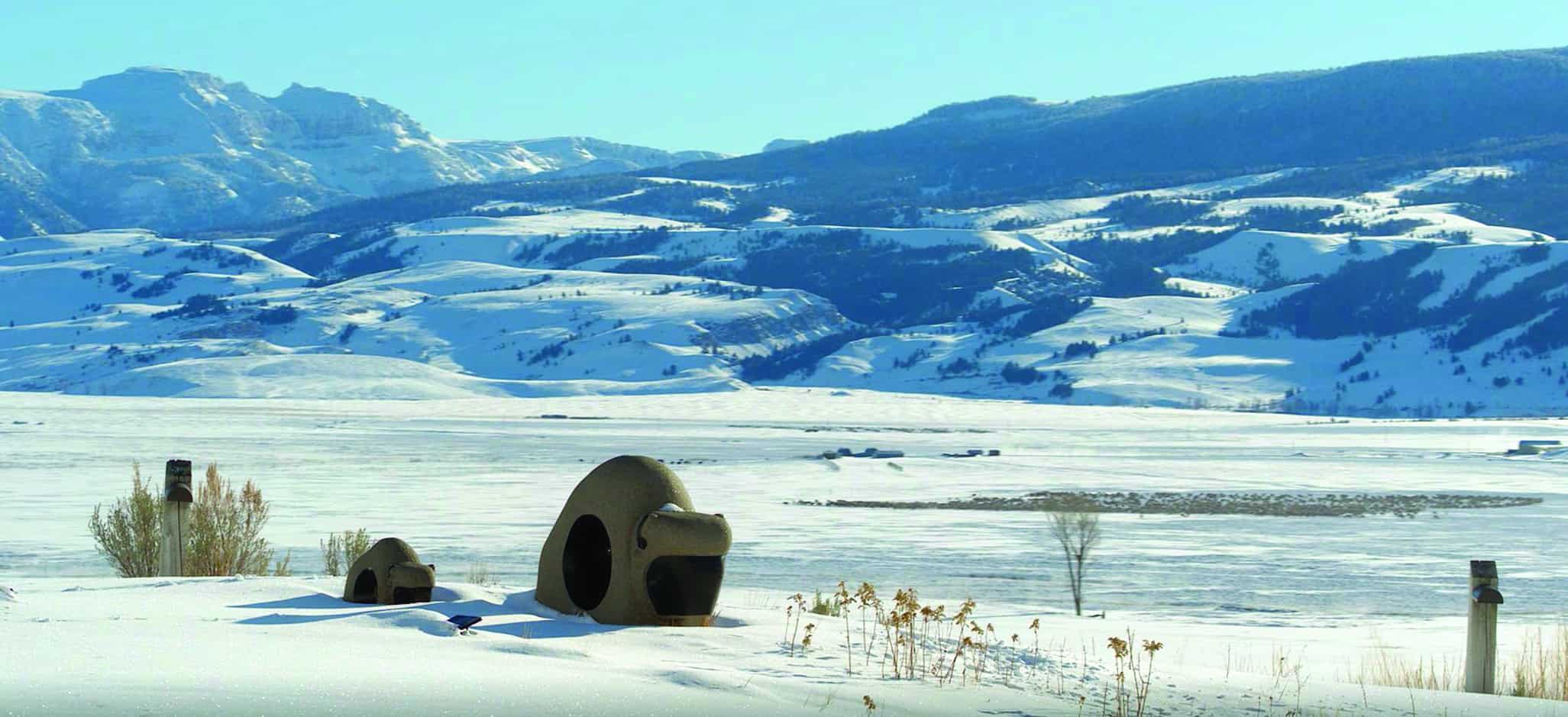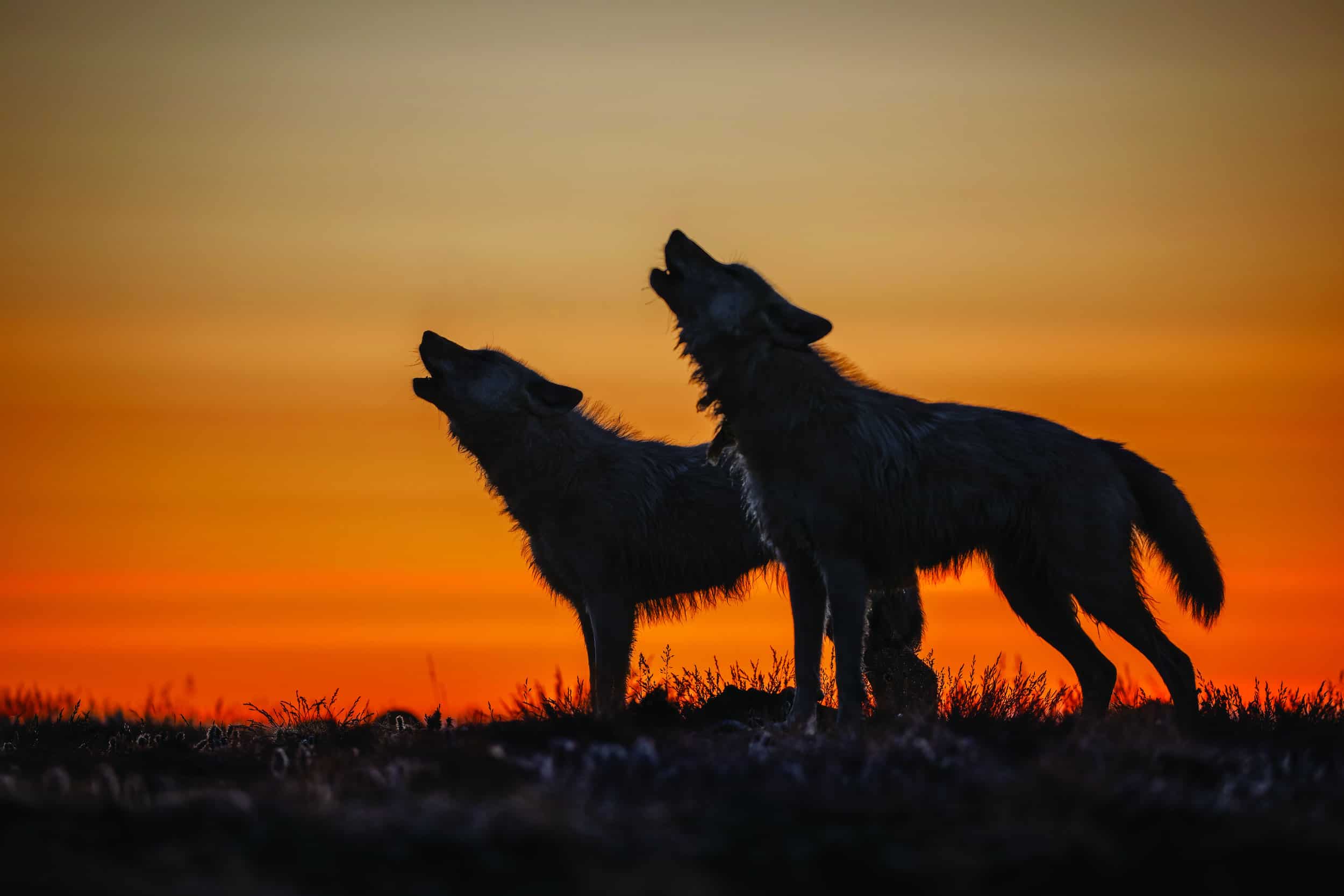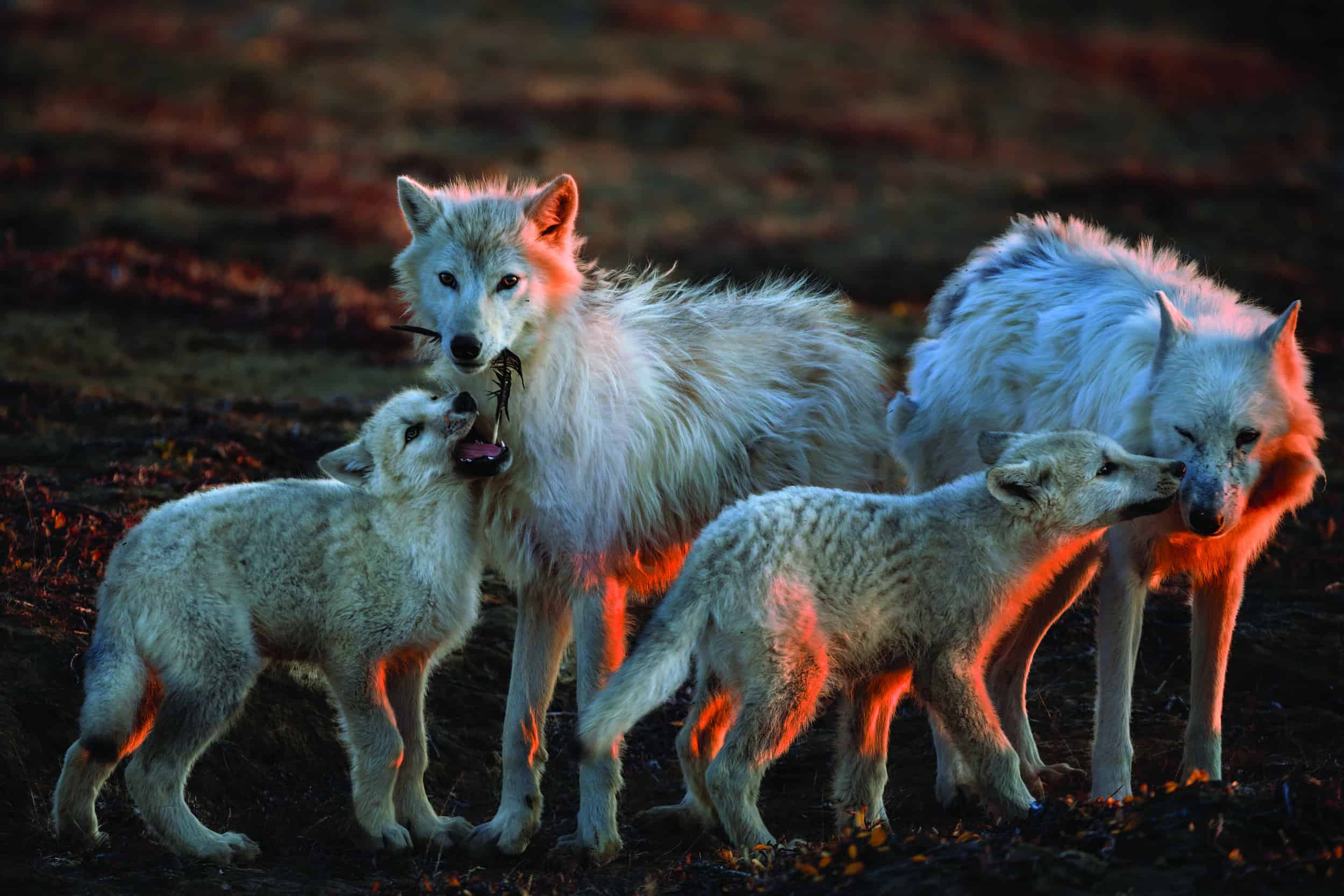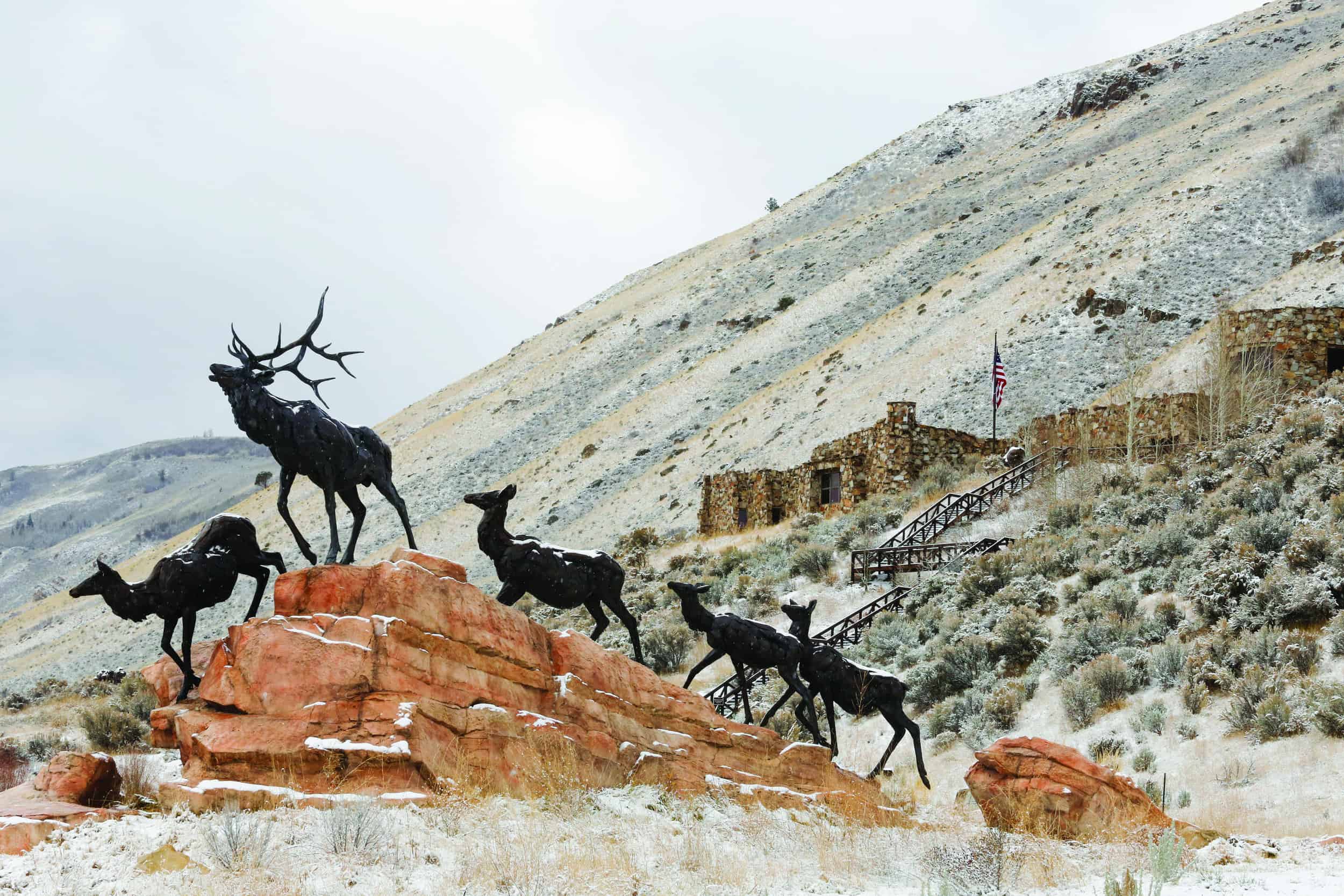Read The
Current Issue
A National Treasure
Steady in its mission, the National Museum of Wildlife Art continues to adapt and evolve to meet modern demands for accessibility, diversity, and excellence.
// By Rachel Walker

Courtesy of NMWA
Rising from the hillside only a few miles north of Jackson’s Town Square, the National Museum of Wildlife Art blends into the landscape so seamlessly that it could be easy to miss. The museum’s driveway is marked with five bronze elk and an unassuming sign, and the building, clad in Idaho quartzite and inspired by the ruins of Slains Castle in Aberdeenshire, Scotland, only peeks out over the hillside. But turn onto Rungius Drive, and you’ll soon land at a national treasure—literally. In 2008, the U.S. Congress designated the museum the “National Museum of Wildlife Art of the United States,” and today it remains the country’s only museum dedicated entirely to wildlife art.
“Visitors often remark that they had no idea of the depth and breadth of this collection,” says museum director Steve Seamons. “They come expecting something different and not really anticipating a world-class collection of art in a variety of mediums.”
Founded in 1987, the 51,000-square-foot museum consists of 14 galleries, a restaurant (Palate), and a research library. The permanent collection holds more than 5,000 artworks that date from 2500 B.C.E. to the present and includes work by luminaries. Georgia O’Keeffe’s Antelope, an oil painting on canvas, depicts an antelope skull half submerged in the sand against a pastel sky. The museum also owns Endangered Species by Andy Warhol, an influential series of 10 silkscreen prints of nearly extinct animals the artist created in 1983. (These prints are not on regular display because of their sensitivity to light.) Two Lions by Theodore Gericault, a French artist who died in 1824 at the age of 32, is one of only 21 Gericault works in American museums.
The museum’s recent acquisition of Eternal Snows of Mount Moran by Thomas Moran activated a healthy debate about what constitutes wildlife art, primarily because the dramatic and stunning oil painting contains no animals. Museum officials welcome this debate. Their position is that landscapes and ecosystem portraits are part of the genre; without the wild, there would be no wildlife. To that end, officials say that even plants—in fact, all living organisms—constitute wildlife. Eternal Snows of Mount Moran, gifted by Lynn and the late Foster Friess, is a powerful, awe-inspiring piece. The painting’s permanent location so near to the actual eponymous peak underscores the synchronicity of art and nature that helps support the museum’s mission to inspire and educate.
“Visitors and locals come to Jackson to experience wildlife and the natural world around us.”
—NMWA director Steve Seamons
Equally impressive is the museum’s Carl Rungius collection, the largest in the United States. Rungius (1869–1959) mostly painted wildlife of the Rocky Mountains in Wyoming and Alberta, Canada, and is considered North America’s premier wildlife painter. In 2020, the museum embarked on the development of the Carl Rungius Catalogue Raisonné, an enormous undertaking that will result in a comprehensive, annotated listing of all the known works of the artist. Not only will the project make a lasting impact on scholarship, but it will also culminate in the publication of a Rungius Masterworks book and a touring exhibition, further raising the profile of the museum.
“Visitors and locals come to Jackson to experience wildlife and the natural world around us,” says Seamons. “We provide our visitors the perfect opportunity to see wildlife depicted in the world-class art included in our collection, and to benefit from the diverse educational offerings we provide for visitors of all ages.”
And, in the wake of Covid-caused disruption, the museum has launched a variety of new programs to engage ever more visitors. At the height of the pandemic, it launched an online art-making class called Make it Wild. A different artist teaches each class, and the series’ popularity inspired officials to continue it even as Covid restrictions lifted and in-person events again became possible.
The museum was uniquely—and coincidentally—prepared for Covid shutdowns in March 2020, having already embarked on creating and producing Bisoncast, an educational video series. Short films that are roughly 15 minutes long, each episode tells the story of a work (or two) in the museum’s permanent collection and how it reflects the real-life natural world in and around Jackson Hole. Museum staff first brainstormed Bisoncast in 2019, and to date have produced six videos with plans to create more, says Sugden chief curator of education Jane Lavino. This program, along with Make it Wild, underscore the value in creating programming that can reach an audience beyond Jackson Hole. They also offer an opportunity for visitors to the valley to continue to engage with the area even once they’ve returned home, Lavino says.
“There are many people who may never make it out here to visit the museum in person, so the next best way is to experience it virtually,” Lavino says. “The good thing about being forced to rethink some of our methods during the pandemic was that we realized that there are times when reaching a virtual audience makes a lot of sense.”
In November 2021, the museum was able to go back to celebrating the opening of new exhibits in person. That month, at the opening of National Geographic: 50 Greatest Wildlife Photographs, more than 450 people turned out for free food, drinks, and small group tours of the exhibit with a staff member. In June 2022, a similar celebration was held for the opening of Bonheur & Beyond, an exhibit that honored women making wildlife art and paid homage to 19th century artist Rosa Bonheur.
The museum’s stated mission is to explore humanity’s vital relationship with nature through fine art focused on wildlife, and all of its programming, from world-class exhibits to local events, operates within that mandate. Community engagement exposes people to issues surrounding conservation and helps foster constructive dialogue around complicated topics. The current exhibit Wolves, Photography by Ronan Donovan started with Montana-based Donovan speaking at the museum about his experiences photographing wolves in Yellowstone and the Arctic for National Geographic. Since their re-introduction to Yellowstone in 1995, wolves have been a controversial topic in the communities around the park. When the museum’s annual magazine, Call of the Wild, asked Donovan what he hoped people might take away from his exhibit, he replied that there were two things: “One, I want people to be immersed in wolves without human influence—to experience how wolves interact, raise their young, and feed themselves with their feet during long hunting forays. I want people to see the landscape through the eyes of wolves and even to experience scenes where wolves are at rest, sleeping. I want people to have a more authentic baseline for the behavior of wolves. The second takeaway is to show people how much conflict exists with wolves in the Northern Rockies that is related to misinformation and misconceptions. It is possible to coexist with wolves, and it is just a matter of how much social tolerance humans allow. I hope this exhibit helps to add to that social tolerance.” Madison Webb, the museum’s marketing director, says, “From a conservation perspective, this [part of our] mission is essential right now.”
The museum is also dedicated to diversifying its collection and acknowledging the Native populations that occupied the land where it now sits. In March 2022, it collaborated with the Wind River Foundation to host artist Robert Martinez and singer Christian Wallowing Bull for a multifaceted performance and art demonstration.
Aside from the galleries and community events, the museum aims to entice families and local residents with community programs ranging from First Sunday, when admission is free to area residents; to Fables, Feathers, and Fur, a free art and story time program for kids that takes place every Friday in the summer and every other Friday in the winter.
The museum has made additional efforts to be accessible. One of its 2019 exhibits was Somos de Aqui, one of the first bilingual art exhibits in Wyoming. In English and Spanish, Somos explored some of Puerto Rico’s iconic wildlife, including some critically endangered species and two of its unique habitats (El Yunque National Park and Mona Island), through photography, audioscapes, and videos. The museum is also working to make its entire collection bilingual and have all display copy in English and Spanish. A partnership with EnChroma, creator of eyewear for color blindness, provides special glasses that help colorblind visitors experience a fuller range of colors in artwork. For those who can’t travel to the museum in person, there’s a webcam trained on the National Elk Refuge across the highway. “The National Museum of Wildlife Art has grown tremendously over the past 35 years,” Lavino says. “And it’s now more accessible and relevant to a wider audience than it has ever been before.” JH
